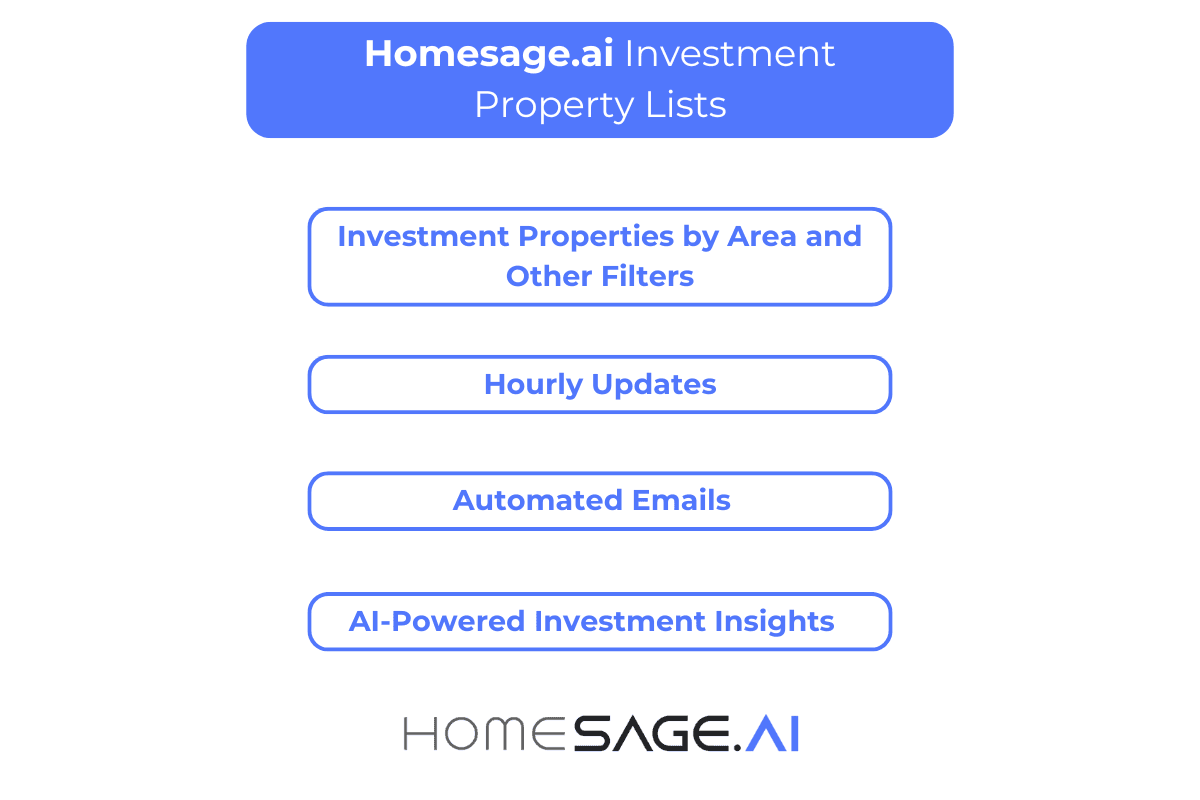Introduction
Have you ever wondered how to make smarter decisions using AI in real estate investment? Integrating AI into your workflow can revolutionize how you discover, evaluate, and capitalize on property opportunities.
In this blog, we’ll explore practical ways to incorporate AI into your process and share tips to maximize your returns.
Why AI Matters in Real Estate Investment
Real estate investing is a complex process with many variables, like market trends, property conditions, and renovation costs. AI in real estate investment helps analyze these factors quickly and accurately, giving you a competitive edge. By integrating AI, you can save time, avoid costly mistakes, and make well-informed decisions.
For instance, platforms like Realtor.com use AI to empower investors with market insights and data-driven tools. Similarly, Homesage.ai offers APIs that evaluate real estate investing with AI to streamline decision-making and maximize efficiency.
Step 1: Start Small, Think Big
The first step to integrating AI in real estate investment is to focus on tools that address your immediate needs. For example, if you’re struggling to estimate renovation costs, Homesage.ai’s Renovation Cost API provides cost insights, saving you time and effort. By tackling one pain point at a time, you’ll build confidence in AI while laying the groundwork for scaling its use across your entire workflow.
Step 2: Automate Tedious Tasks
AI tools excel at automating repetitive tasks like searching for properties or calculating ROI. Homesage.ai’s Investment Property Lists are a great example. You can filter properties by location, price range, or condition and receive a curated, updated list of potential investments. This makes real estate investing with AI both efficient and precise.
Automation eliminates the drudgery, so you can focus on higher-value activities like negotiation and strategy.
Step 3: Use Data to Drive Decisions
AI thrives on data, and your decisions should too. Tools like Homesage.ai’s Property Information API provide detailed property insights, including size, features, and market trends. These data points help you spot undervalued properties or assess price flexibility for negotiations.
External sources also matter. Platforms like Zillow provide robust market data to supplement AI-driven insights. Combining data from trusted sources with AI analysis ensures smarter, more confident decisions.
Step 4: Prioritize User-Friendly Tools
The best AI tools are easy to use. Complicated systems can slow you down, but intuitive platforms like Homesage.ai simplify your workflow. For instance, their Full Property Reports consolidate insights like ARV, renovation costs, and ROI metrics into one accessible format. By choosing user-friendly tools, you’ll spend less time on training and more time achieving results.
Step 5: Monitor and Adapt
AI tools improve over time with user feedback and data updates. To fully leverage AI in real estate investment, monitor the performance of your tools and adjust as necessary. If you need to focus on fixer-uppers, for example, Homesage.ai’s TLC API can identify properties needing renovations, ensuring you’re targeting the right opportunities.
Remember, the best results come from continually refining your approach.
Step 6: Leverage AI for Predictive Insights
AI isn’t just about analyzing current data, it can also forecast trends and opportunities in the real estate market. By leveraging tools like Homesage.ai’s Investment Potential API, you can identify properties with high potential ROI before they become hot commodities. These predictive insights help you stay ahead of the competition and make strategic investments that align with future market shifts.
For instance, AI can analyze historical market trends, property appreciation rates, and economic indicators to predict future property values. This foresight allows you to allocate resources more effectively, whether you’re buying to flip or planning for long-term rental income.
Step 7: Collaborate Across Teams Using AI
Real estate investment often involves multiple stakeholders, from real estate agents to contractors and lenders. AI tools can bridge communication gaps by providing a unified source of accurate, real-time information. For example, Homesage.ai’s Full Property Reports can be shared across teams, ensuring everyone works with consistent and comprehensive data.
Collaboration becomes seamless when all parties have access to tools that evaluate renovation costs, assess property conditions, or predict price flexibility. This not only saves time but also minimizes misunderstandings and errors, ultimately leading to more successful transactions.
Investing in real estate with AI is about future-proofing your business. AI allows you to find undervalued properties quickly, predict renovation costs accurately, and close deals faster.
Conclusion
 Integrating AI in real estate investment isn’t just about staying ahead of the curve, it’s about transforming your workflow for smarter decisions and better results. By starting small, automating tasks, and leveraging user-friendly tools, you can make real estate investing with AI a seamless part of your strategy.
Integrating AI in real estate investment isn’t just about staying ahead of the curve, it’s about transforming your workflow for smarter decisions and better results. By starting small, automating tasks, and leveraging user-friendly tools, you can make real estate investing with AI a seamless part of your strategy.



